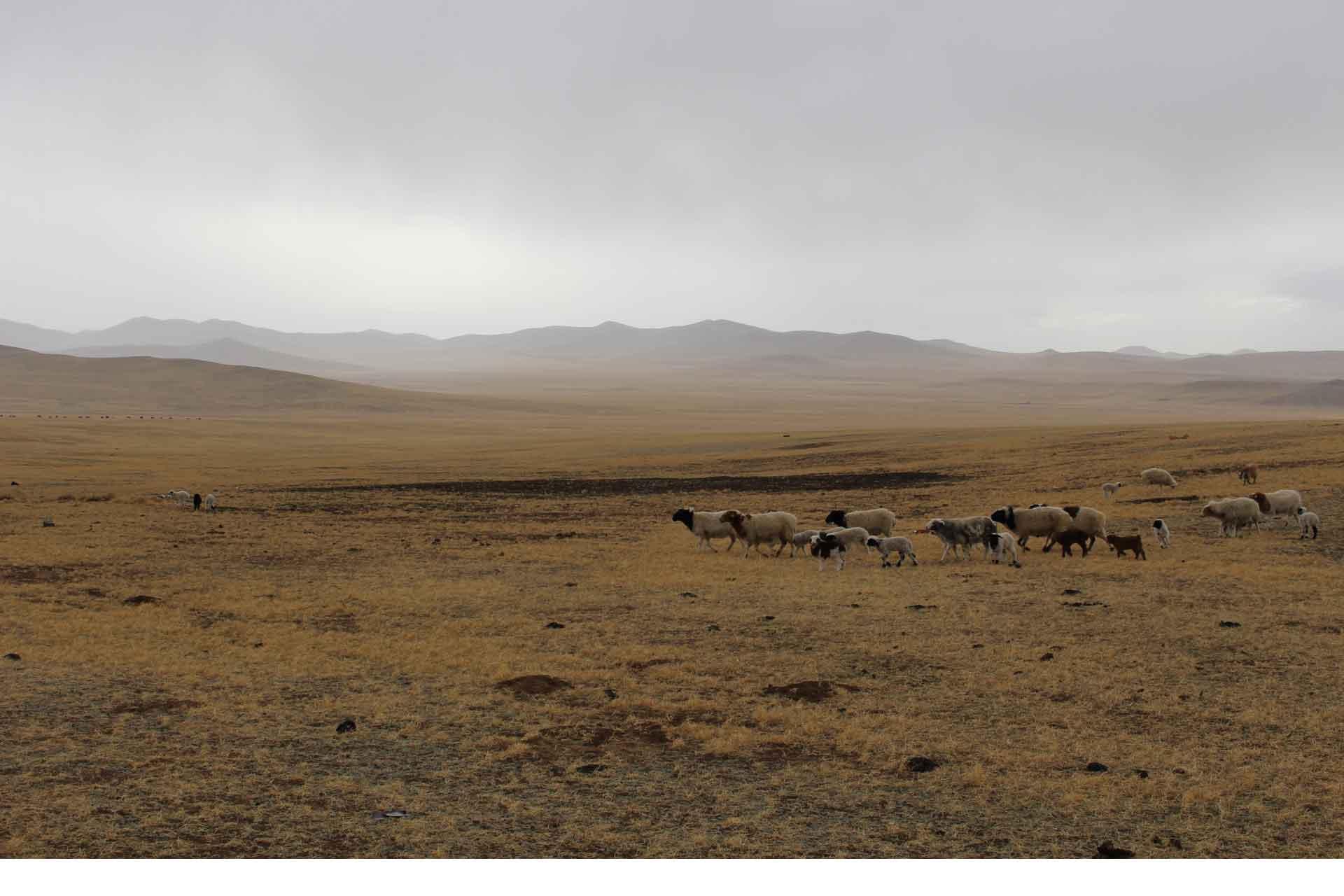Researchers at The Pirbright Institute have collaborated with State Central Veterinary Laboratories (SCVL) and the General Agency for Veterinary Services (GAVS) in Mongolia to assess the impact of foot-and-mouth disease (FMD) control methods employed during the 2017 outbreaks. The team found many nomadic herders were unable to maintain their food supply and financial stability, and used these findings to recommend policy changes that could improve wellbeing and economic security among herders.
As in many low- and middle-income countries (LMIC), rural farmers and herders in Mongolia are heavily reliant on animal protein and fat in their diets. The lack of alternative food sources can leave them vulnerable to diseases of livestock such as FMD, which affects cloven-footed animals such as cattle, sheep, goats and camels, resulting in a reduction in weight gain and milk production.
The team calculated that, at a national level, the Mongolian government spent USD$7.35 million in order to reduce the spread of the 2017 FMD outbreaks, which included costs for testing, vaccinations, compensation and quarantine implementation. Strict rules were put in place when a case was confirmed – animals showing clinical signs were culled and a 10 kilometre quarantine zone established around the area for 28 days. During this time, no animals or people could move in or out of the quarantine zone.
The team then focused on local level impacts and surveyed 112 herders that either had cases of FMD in their herds or did not have FMD cases but were caught in quarantine zones due to a nearby outbreak. Many herders reported going without milk or meat for months after the restrictions were put in place, regardless of whether FMD was present in their herds. Nearly half of those surveyed resorted to borrowing money to buy food, medicines and/or pay bills and bank loans. This indicates the negative effects of outbreaks and some control measures can last far longer than the initial quarantine period.
Seasonal differences also affected how well the herders were able to cope. During winter outbreaks, the herders were able to live off food reserves that had been gathered in preparation for Mongolia’s harsh winters. In contrast, summer outbreaks resulted in higher expenditure as herders had fewer reserves to live off and their ability to accumulate winter stores was also impeded.
At the time of the study, over 90 percent of the herders had not received compensation from the government for animals that were culled due to infection. This delay in payment meant herders were not able to replace animals that were culled which reduced their ability to produce food, leading to increased debt and a potential reluctance to report future FMD cases in their herds.
The team used the survey results, which have been published in Transboundary and Emerging Diseases, to provide recommendations that could alleviate some of the pressures herders experience during outbreaks. For example, enhanced food support such as food banks for those in quarantined areas could ensure the nutritional needs of herders and their families are met. Providing compensation in a timely manner could also reduce reluctance to report outbreaks and prevent the spread of disease.
Dr Georgina Limon-Vega, lead author of the study, said: “Understanding how control measures impact herders enables us to make tailored suggestions aligned with the country characteristics. Although this study focuses on the 2017 Mongolia FMD outbreaks, the findings and approach we used are relevant to other endemic areas and could therefore be employed in other regions.”
The study was funded by the Biotechnology and Biological Sciences Research Council (BBSRC), part of UK Research and Innovation (UKRI) and the Veterinary and Breeding Agency in Mongolia.
Image: Sheep being moved across the plains in Mongolia by nomadic herders, by Dr Georgina Limon-Vega.
